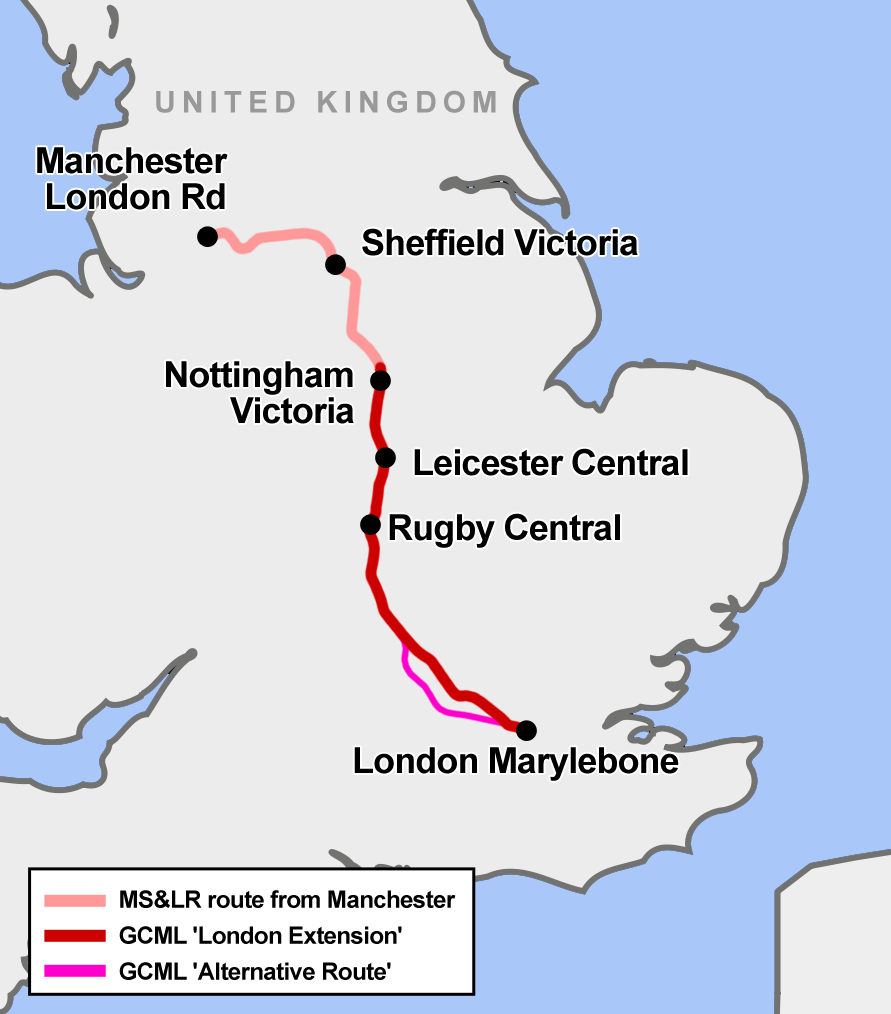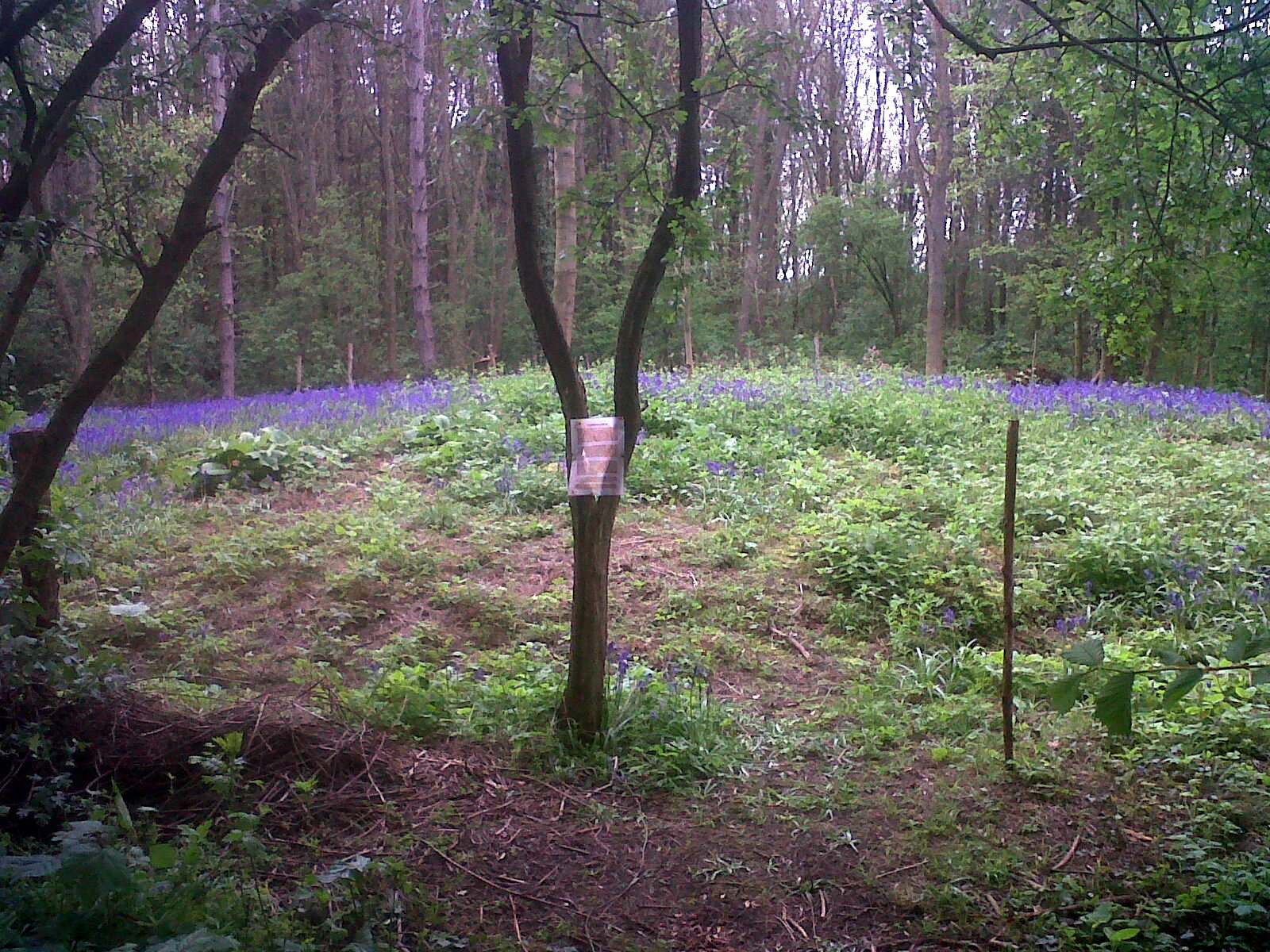|
Gotham Sidings
Gotham Sidings , was a set of railway sidings on the Great Central Main Line, where the line crosses Gotham Moor near Gotham, Nottinghamshire. The sidings were set between Rushcliffe Halt and Ruddington railway station. The sidings were constructed between 1899 and 1900, after the completion of the London Extension in 1899, to serve a short branch line to the Limestone (plaster) works of the Gotham Company's works (later British Gypsum) situated in Gotham itself. The branch line closed in 1969. The route of the branch line from Gotham Junction can still be traced, and part of it is now used as a road. The Great Central Railway (Nottingham) The Nottingham Heritage Railway (formerly known as Great Central Railway (Nottingham) and Nottingham Transport Heritage Centre) is a heritage railway and transport museum on the south side of the village of Ruddington in Nottinghamshire. The ... have stated their intention to develop the site along the lines of Swithland Sidings, thou ... [...More Info...] [...Related Items...] OR: [Wikipedia] [Google] [Baidu] |
Great Central Main Line
The Great Central Main Line (GCML), also known as the London Extension of the Manchester, Sheffield and Lincolnshire Railway (MS&LR), is a former railway line in the United Kingdom. The line was opened in 1899 and built by the Great Central Railway running from Sheffield in the North of England, southwards through Nottingham and Leicester to Marylebone in London. The GCML was the last main line railway to be built in Britain during the Victorian period. Built by the railway entrepreneur Edward Watkin with the aim to run as a fast trunk route from the North and the East Midlands to London and the south of England. Initially not a financial success, it recovered under the leadership of Sam Fay. Although initially planned for long-distance passenger services, in practice the line's most important function became to carry goods traffic, notably coal. In the 1960s, the line was considered by Dr Beeching as an unnecessary duplication of other lines that served the same places, especial ... [...More Info...] [...Related Items...] OR: [Wikipedia] [Google] [Baidu] |
Gotham, Nottinghamshire
Gotham ( ) is a village in Nottinghamshire, England, with a population of about 1,600, measured at 1,563 in the 2011 census. It is in the borough of Rushcliffe, and has a parish council. The name Gotham comes from the Old English for "goat home". References to Gotham in literature The village is most famed for the stories of the "Wise Men of Gotham". These depict the people of the village as being stupid. However, the reason for the behaviour is believed to be that the villagers wished to feign madness to avoid a Royal Highway being built through the village, as they would then be expected to build and maintain this route. Madness was believed at the time to be highly contagious, and when King John's knights saw the villagers behaving as if insane, the knights swiftly withdrew and the King's road was re-routed to avoid the village. One of the mad deeds seen by the knights was a group of villagers fencing off a small tree to keep a cuckoo captive from the Sheriff of Notting ... [...More Info...] [...Related Items...] OR: [Wikipedia] [Google] [Baidu] |
Rushcliffe Halt
Rushcliffe Halt is a railway station on the former Great Central Railway London Extension from London Marylebone serving the north of East Leake, Nottinghamshire, currently in use as part of the Nottingham Heritage Railway. The station was built as a later addition to the railway, opening in 1911 to serve the adjacent Rushcliffe Golf Club. Later, sidings were added to serve the nearby gypsum works. The station closed to passengers in 1963, although freight continued to serve British Gypsum until the early 1980s. The station is the only surviving example of a Great Central Railway twin platform configuration; 'island' platforms were the standard on the route. During the 1990s, the line and station entered preservation. In 2000 freight trains to the gypsum works resumed and in 2003 Great Central Railway (Nottingham) introduced a weekend passenger service between Loughborough junction and Nottingham Transport Heritage Centre Ruddington on a preserved section of the line. GCRN serv ... [...More Info...] [...Related Items...] OR: [Wikipedia] [Google] [Baidu] |
Ruddington Railway Station
Ruddington is a disused railway station on the Great Central Main Line south of Nottingham. The line had branches that ran to the now decommissioned Ruddington Depot. It was originally a standard GCR country island type station, like those surviving at Quorn and Woodhouse and Rothley, accessed from a road overbridge. The station buildings have been demolished though the island platform still survives. Just south of the station is where the northern end of the northern preserved section of the GCRH starts. The station opened 15 March 1899 and closed to passengers on 4 March 1963, though passenger trains continued to pass through until closure of the line on 3 May 1969. Goods trains continued until the 1980s. During WW2 a new railway station, Ruddington Factory Halt railway station, was constructed at Ruddington Depot The Great Central Railway (Nottingham) The Nottingham Heritage Railway (formerly known as Great Central Railway (Nottingham) and Nottingham Transport Her ... [...More Info...] [...Related Items...] OR: [Wikipedia] [Google] [Baidu] |
Branch Line
A branch line is a phrase used in railway terminology to denote a secondary railway line which branches off a more important through route, usually a main line. A very short branch line may be called a spur line. Industrial spur An industrial spur is a type of secondary track used by railroads to allow customers at a location to load and unload railcars without interfering with other railroad operations. Industrial spurs can vary greatly in length and railcar capacity depending on the requirements of the customer the spur is serving. In heavily industrialized areas, it is not uncommon for one industrial spur to have multiple sidings to several different customers. Typically, spurs are serviced by local trains responsible for collecting small numbers of railcars and delivering them to a larger yard, where these railcars are sorted and dispatched in larger trains with other cars destined to similar locations. Because industrial spurs generally have less capacity and traffic t ... [...More Info...] [...Related Items...] OR: [Wikipedia] [Google] [Baidu] |
Great Central Railway (Nottingham)
The Nottingham Heritage Railway (formerly known as Great Central Railway (Nottingham) and Nottingham Transport Heritage Centre) is a heritage railway and transport museum on the south side of the village of Ruddington in Nottinghamshire. The route consists of almost of the former Great Central Railway Main Line from Loughborough South Junction (with the Midland Main Line) to Fifty Steps Bridge and the site of Ruddington's former GCR station, plus a branch line from Fifty Steps Bridge to Ruddington Fields station which is located on a former Ministry of Defence site next to Rushcliffe Country Park. There are stations open to the public at Ruddington Fields (within the main centre site) and at Rushcliffe Halt. The GCR(N) aim to re-open the former station at East Leake in the longer term. The railway is currently not connected to Great Central Railway (at Loughborough Central in Leicestershire), although there are plans well underway and work has started to reunite the two p ... [...More Info...] [...Related Items...] OR: [Wikipedia] [Google] [Baidu] |
Swithland Sidings
Swithland Sidings is a set of railway sidings on the preserved Great Central Railway, situated just south of Swithland Reservoir and Swithland Viaduct which crosses it. Commercial history The original plans for the MS&LR's London Extension had a station situated at Swithland instead of Rothley, although Rothley was much the larger village of the two, and only slightly further from the line. Local pressure, much of it spearheaded by Frederick Merttens, Lord of Rothley Manor, forced a change in the plans and the proposed site changed to Rothley; however, this did not mean that Swithland station was abandoned. The railway company had visions of turning the area into a tourist spot and the construction of Swithland station was commenced anyway. It would have consisted of an island platform of the standard design that became typical of the line, here the less common "embankment" type reached from a roadway (the Swithland-Rothley road) that passed beneath the line, similar to East ... [...More Info...] [...Related Items...] OR: [Wikipedia] [Google] [Baidu] |



